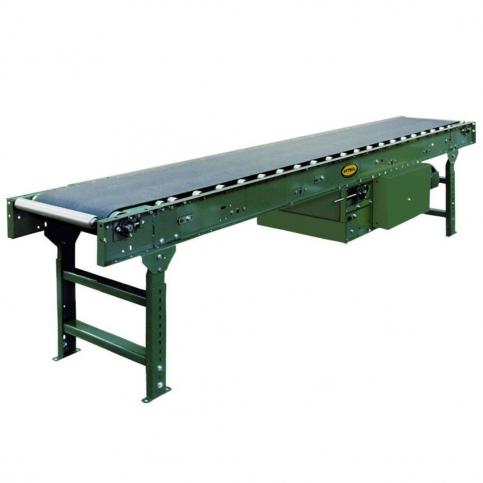Choosing the right conveyor belt is crucial to ensure the optimization of your processes. Using the wrong conveyor belt can result in poor flow control, a lack of grip for your specific products, and failure to perform adequately on incline and declines.
There are many factors to consider when choosing the right conveyor belt.
First are the external factors: what aspects of your applications will affect the kind of conveyor belt you choose? Here are the external factors you need to keep an eye on:
- Kind of product: including shape, size, weight, and surface type
- The environment of your facility: is there high humidity? What are the temperature variances like?
- The mechanics of your operations: inclines or declines, the need for sortation, the presence of inspection workstations, and more.
Now, you will need to consider factors pertaining to the conveyor belt itself. These include:
- The material of the belt
- The strength of the belt, which will be affected by its material and construction (the higher the number of piles or interwoven fabrics, the stronger the belt.) Belt strength will be expressed in pounds per inch.
- Minimum useable pulley diameter
- Temperature resistance or adaptability
- Friction or grip of the belt, which will be affected by the material and also whether or not the belt has any special coatings
As you may have guessed from the list above, conveyor belt material plays a huge role in the applications a belt is suited for. Below, you will find a list of the most common conveyor belt materials and the specific traits or benefits brought by those materials:
1) PVC – resistance to fluids specifically related to foodstuffs such as mineral and vegetable oil as well as and animal fat.
2) Neoprene – resistance to oil, not foodstuff-specific.
3) Polyurethane – resistance to both oil and abrasive substances.
4) Silicone – high resistance to extreme temperatures.
5) Teflon – the ability to avoid sticking from adherent materials.
6) Rubber – resistance to water and cold temperatures. Has relatively high friction and grip.
7) Nitrile – resistant to all oils, including foodstuff-specific oils.
8) Kevlar – resistance to high temperatures, mildew, and chemical substances.
Occasionally, standard conveyor belt products will not suffice to cover all your bases. In such situations, expert material handling solution providers like Norpak Handling can provide customized solutions after in-depth consultations with your team about your unique needs.
If you’re looking for the right conveyor belt, chances are you are also looking for a suitable conveyor surface for your conveyor belt. The two most common types are roller beds and slider beds. Make sure to check out this blog to learn how to choose between roller beds and slider beds.
For all the best conveyor products, get in touch with Norpak Handling today. Norpak's experienced sales staff is capable of making the selection and would typically do this when making a recommendation. Our experts adopt attention to detail that is unrivalled in the industry in our consultations with clients, ensuring that no aspect of their needs is left out from our solutions.










